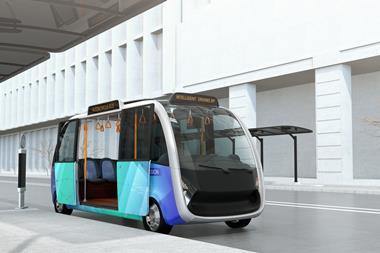Industry commentators agree that there are still a number of question marks to be addressed before the insurance of self-driving cars can become a reality
Autonomous vehicles are set to revolutionise the way Brits drive, promising safer roads with fewer accidents and increased levels of mobility, even for some of society’s most vulnerable.

In San Francisco and other parts of the US, driverless taxis are already a relatively common sight. But before this vision becomes a reality on the UK’s roads, there are still a number of issues that need to be resolved – and the insurance industry will be an important factor in making this happen.
One of the primary ways insurance can help with the adoption of driverless cars is by creating products that can insure these vehicles – but QBE Europe motor underwriting director Jon Dye believes the insurance sector is still some way from establishing how this will work in practice.
“At the moment, a lot of motor pricing is based on who’s behind the wheel and it’s more about the driver and driver behaviour, rather than the vehicle itself,” he told Insurance Times.
“But we are now transitioning to a place where vehicles will take more and more of the responsibility as to whether [car owners are] going to have an accident or not.
“When we get to that point of [needing to insure] self-driving vehicles, then we ultimately have to ask ourselves what we are underwriting. That will [concern] the capability of the algorithm, the technology, the software and the hardware that sits within that vehicle.”
Adam Clarke, chief underwriting officer at Ageas UK, added that having access to the data that underpins autonomous vehicles’ systems can help insurers to better understand the risks they are underwriting.
He continued: “It is critical that insurers have access to the data from autonomous vehicles so we can fully support the adoption of this technology and the opportunities it offers.
“The plethora of data from these new, connected cars can be used to understand risk better.”
Data driven
For now, there is no clear method for determining how pricing will work practically for autonomous vehicles, but as with everything in insurance, data will be of vital importance.
Read: Aviva and Darwin announce second autonomous vehicle passenger shuttle
Explore more motor-related content here, or discover more news here
“The first thing from a data perspective is understanding which vehicles are autonomous,” Dye explained.
“We are lobbying for a clear indication of which vehicles – down to the individual vehicle at a point in time with a live dynamic database – have got self-driving capabilities.”
This information will then allow insurers to determine not only which cars have autonomous driving features from an underwriting perspective, but also which claims fall under the autonomous banner.
“We will have to determine which mode the car was driving in when it had the accident,” Dye added.
“If it was in manual mode, then there would be liabilities [for] the driver if it was the driver’s fault. But if it was in self-driving mode, then the driver would be entitled to claim [for any injuries].”
However, Esure head of motor underwriting Rob Clark said this level of data sharing is far from being a practical solution and that more work is needed to make it a reality.
“We are some way off reaching an understanding about who is driving at the point of claim and the infrastructure that shares information between manufacturers and insurers in a central space isn’t yet developed,” he noted.
Clark added that there is also the issue of having the right skills across the repair network to ensure that autonomous vehicles can be repaired properly following an accident.
He continued: “We may need a slight shift in skill set or tooling in the industry to ensure autonomous driving modes are correctly calibrated post-accident.”
Taking responsibility
Regardless of these data challenges, before any autonomous vehicles can make it successfully onto the UK’s roads – outside of the trials currently taking place – additional legislation will be needed beyond the existing Automated and Electric Vehicles Act (AEVA) 2018.
“There’s still 20 pieces of secondary legislation or consultations that are going to need to take place before we get even close to having a finalised framework where we will have the ability to have autonomous vehicles on our roads,” Dye said.
One of the biggest issues still to be tackled by this secondary legislation concerns uninsured drivers.
Currently, there is no provision in the act to provide compensation for third parties that are injured in a collision with an uninsured autonomous vehicle – and the Motor Insurers’ Bureau (MIB) is clear that this needs to change.
“We believe that AEVA would need to be amended to resolve this situation,” the MIB told Insurance Times in a statement.
“It is important to ensure that any third party victims of collisions caused by uninsured autonomous vehicles have a route to compensation and there is a framework set out under AEVA for the same rights and obligations as those that apply for insurers.”
Dye agreed in principle with the MIB, but added that insurers should not be left footing the bill.
“What’s key is that – given the vehicle is driving itself – who is responsible for ensuring that [the] vehicle is driving as safely as possible?” he asked. “From a safety perspective, we do not believe [the insurance industry] should be funding that uninsured loss as we do at the moment through the MIB.
“We think [that] is a responsibility of the major manufacturers, or whoever’s putting the autonomous vehicles on the roads, and perhaps the government to be funding that – to make sure there’s clear responsibilities [around safety].”
So, while the adoption of autonomous vehicles has a plethora of expected safety and mobility benefits, there is still some way to go before the UK starts seeing driverless cars on the roads on a regular basis.

















































No comments yet